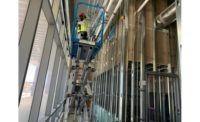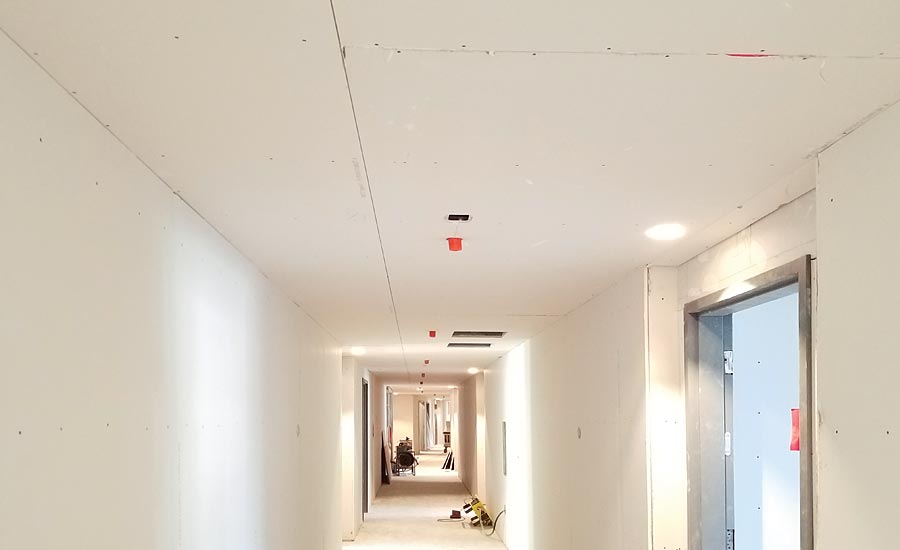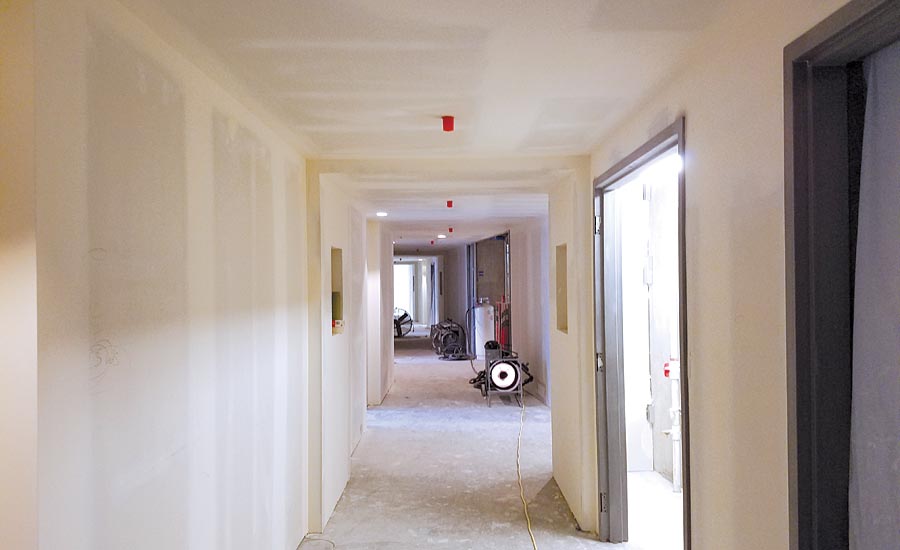The Deal with Control Joints






Why is it that the subject of control joints only comes up after the finishes are completed and some cracks appear? Do you have a responsibility to install control joints if they are not clearly indicated in the project documents?
Ninety-nine times out of a hundred, the specifications will reference either ASTM C840 or GA-216 for the application and finishing of gypsum wallboard. And ninety-nine times out of a hundred, when a crack appears, the owner’s representative will bring it to your attention that control joints are your responsibility and direct that you either, fix the cracks, install the control joints per the standards and/or give a credit back for not installing them in the first place.
Drywall Cracking
We’ve all been there but what’s surprising is how many of us continue to go down the same path and expect different results. I have yet to do an inspection, that involves cracks, where there is written documentation stating that no control joints are to be installed. I will always hear, “oh yeah, I think it came up in a sub meeting and they said they didn’t want them.” But is there documentation to back it up? No.
Why subject yourself to this grief when it’s really simple to take care of it before any actual work begins. If the drawings happen to actually indicate control joints on the elevations, it’s a no brainer but typically they don’t.
Let’s be clear. It is the design professionals’ responsibility to specify the type of product to be used and to establish the specific locations for control joints based upon the guidelines and/or recommendations provided by ASTM C840 and/or GA-216, which will serve to compliment the design intent or architectural features.
GA-216
- 4.7.2 Control joints shall be installed where indicated on the plans.
- 4.7.3 Control joints in the gypsum panel products shall be specified by the architect or designer where any of the conditions described in Sections 4.7.3.1 through 4.7.3.7 exist.
- 4.7.3.7 Control joints shall be installed where specified by the architect or designer as a design accent or architectural feature.
So does this remove you from all responsibility? Let’s see, you’re the “professional.” What do you think? If you point out, after the fact, that it’s not your responsibility, your status as a “professional that should have known” will be elevated to the point where you will do the repairs, for free, and you’ll be looked upon as getting caught trying to “cut a fat hog.”
In many cases the design professional chooses to abstain from the use of drywall control joints because they affect the finish appearance of the building. The contractor must rely on the project documents to determine whether control joints will be utilized and, if utilized, where the control joints are to be installed. In determining the use or extent of control joints, the contractor will examine the specifications for quality or the performance requirements of a product and the construction drawings to determine quantities. Provided the necessary information is explicit in both the specifications and drawings, the contractor is responsible to install the control joints as indicated.
If the control joints are referenced in the specifications but are not indicated on the construction drawings, the anticipated quantity for the contractor is zero. Failure to indicate the control joint locations infers that the intent of the design is to abstain from their installation, in which case, all work associated with the installation of control joints is to be considered an increase to the scope and as such, compensable.
So, if you are in a typical situation where the specifications reference ASTM C840 and GA-216 and may even mention “Control joints per GA-216” in the Execution portion, but they are not indicated on the drawings, you cannot realistically establish a definitive quantity. You know that sooner or later, it’s going to come up. So what should you do?
Start with clarifying your bid proposal. The purpose of the bid proposal is to provide a cost to perform the work and if necessary to clarify your scope of work and eliminate as much confusion as possible. “Control joints are provided only as clearly indicated on the drawings.” Pretty simple eh?
Now that you have clarified your proposal, have you fulfilled your responsibilities and are you required to bring up control joints ever again? The question really should be; do you really think the subject won’t come up again? Of course it will.
We are not only the “professionals” we are also pro-active and prudent contractors. One of the very first RFI’s you write should be to confirm that it is the architect’s intent not to utilize control joints as recommended in GA-216 and ASTM C840. “GA-216 and ASTM C-840 are both referenced in Specification 09250 and Section 2.6 Trim, identifies the product Zinc Control Joint No. 093. The architectural drawings do not indicate the use of control joints. Please confirm.”
At this point, one of two things is going to happen. You will have written documentation that control joints are not to be utilized, done deal, or you will be asked to provide control joints. Remember, your proposal was perfectly clear on the quantity of control joints that were included in your cost proposal, zero. This is not a “gotcha” moment; this is a contractor acting in a professional and responsible manner. Sit down with the architect and determine where she/he would like the control joints to be located, have those locations identified in the RFI response and (now that you can actually determine the quantity) price the change/increase to the scope of work.
What a difference a few little steps can make. Think about it. Having “managed” the control joint issue, now how do you feel when that call comes in?
Looking for a reprint of this article?
From high-res PDFs to custom plaques, order your copy today!









